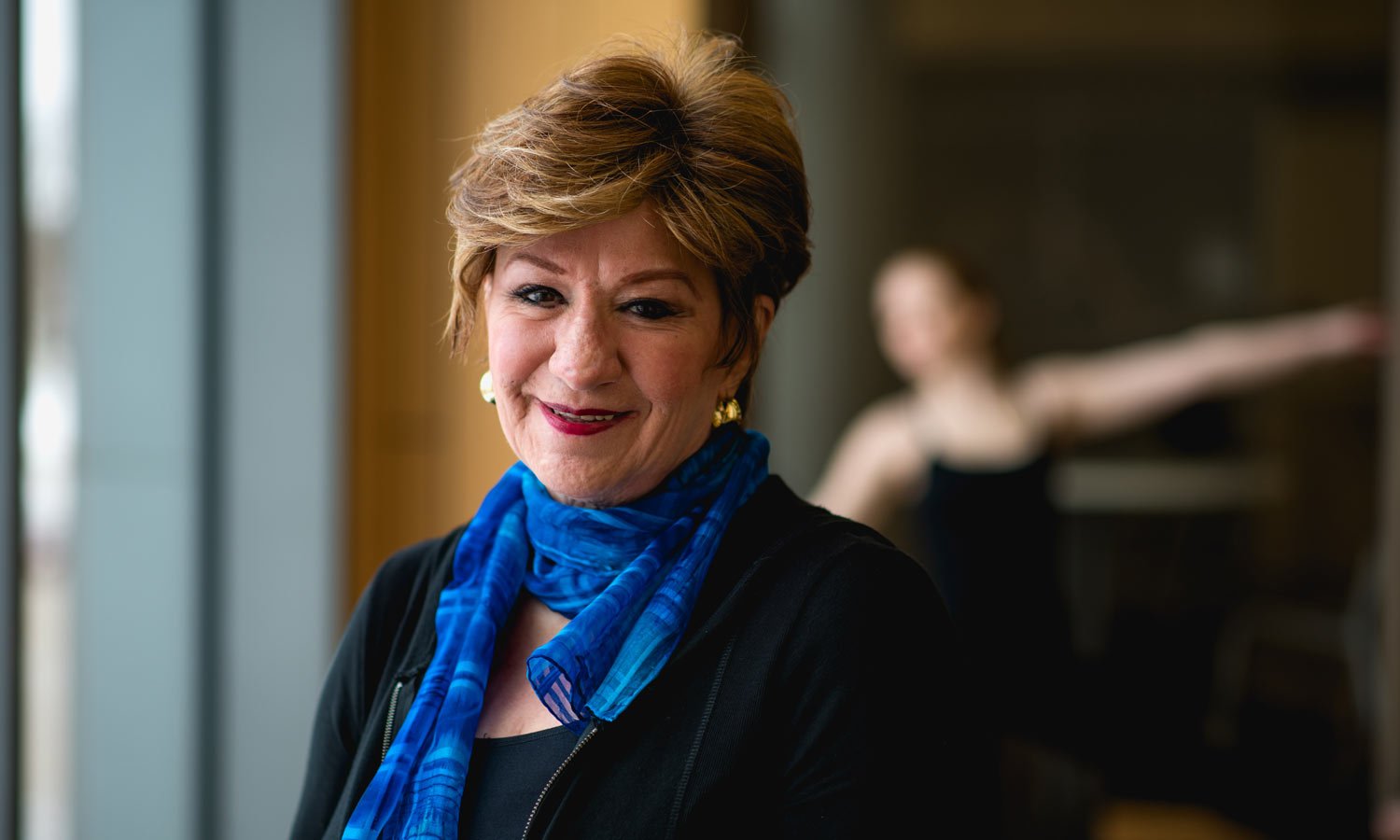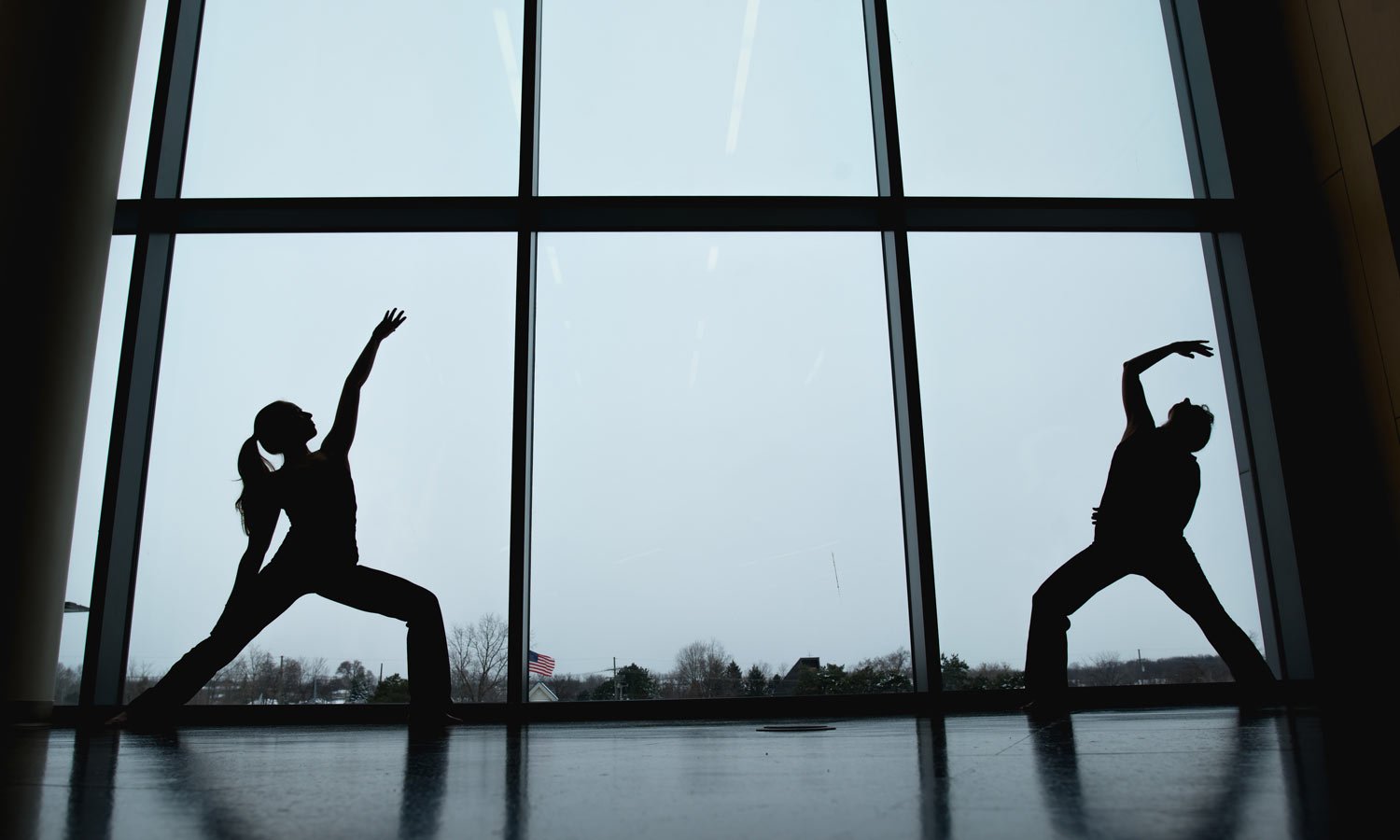Features



Features
Winter 2017
| by Sean Delaney and Emell Derra Adolphus
Breathing Treatment
An Oakland University research study comparing the effects of practicing yoga to exercise may help lung cancer patients breathe a little easier
The physical benefits gained from practicing yoga’s various postures have made the 5,000-year-old Hindu discipline one of the most popular forms of exercise today. But an Oakland University research study comparing the effects of practicing yoga to exercise on lung cancer patients may prove that there is more to yoga than the physicality of striking a pose.
“It’s a bit complicated because we’re looking at yoga’s breathing and comparing it to exercise,” said Dr. Judi Fouladbakhsh, Ph.D., associate professor of Nursing at Oakland University. “While there are similarities — stretching, movement, etc. — yoga also deals with meditation and structured breathing. We really want to see how the breathing impacts this population because it’s a population that often suffers from shortness of breath.”
The study — sponsored by Oakland University, the National Cancer Institute, Wayne State University and Barbara Ann Karmanos Cancer Institute — measures yoga’s impact on breathing, stress, sleep and quality of life for people over age 21 who have been diagnosed with stage I-IIIA non-small cell lung cancer and have had surgery for treatment.
Participants complete a questionnaire, wear a special watch that monitors their sleep patterns, and attend one 40-minute yoga or exercise class per week for 12 weeks. The results of the study will be available this spring, but the initial feedback has been positive, said Dr. Fouladbakhsh.
“What (participants) told us verbally is that they find that yoga is helping. They have indicated that it has a calming effect, helping with the shortness of breath. And this is hard to capture because your shortness of breath can come and go depending on what you’re doing.”
From early observations of the study, Dr. Fouladbakhsh has also seen how participants take what they’ve learned in class and incorporate it into their daily lives.
“One of the patients actually told us that she uses the breathing techniques for when her anxiety was high during medical check ups. So that was her way of adapting it to what she needed in life,” she said. “There are literally thousands of different types of breaths you can take, and you correlate that with the movements. It enhances the meditation, but it also enhances the movement and the flow of energy through the body.”
Still, Dr. Fouladbakhsh explained that many more studies are needed to determine just how flexible yoga can be as a tool in patient recovery.
“Is it the actual stretching, is it the hormones that change, the neurotransmitters, or is it all of it? That’s not clear in yoga research ... yet.”
Dr. Fouladbakhsh’s next research study will examine how yoga can be adapted to manage pain and improve the quality of life of breast cancer patients. Want to participate? Contact her at [email protected].
More Features
-

Breathing Treatment
An Oakland University research study may help lung cancer patients breathe a little easier
-

Taking the Plunge
How decorated Oakland University swimmer, alumnus Mike Koleber buoyed his business dreams
-

Literary Garden
OU alumna, literature teacher Jennifer McQuillan transcends the customary classroom with a green thumb
